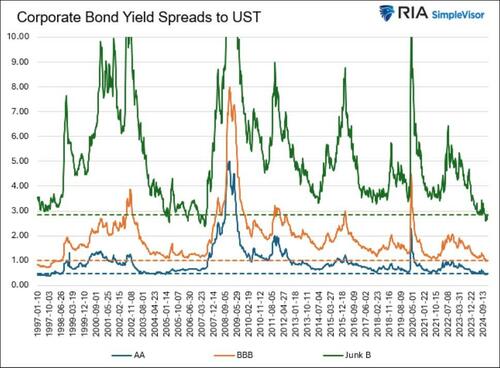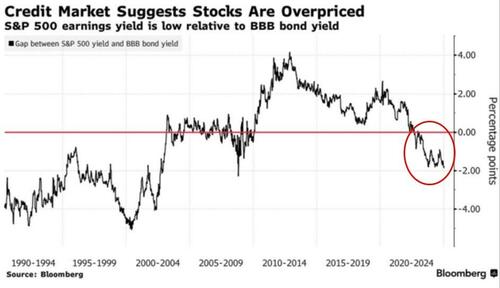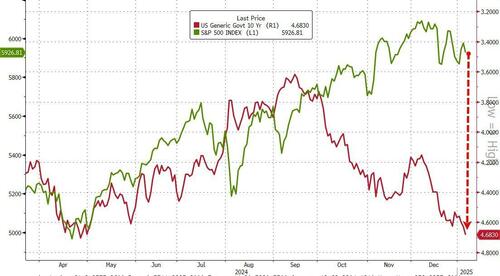
Credit Spreads Send A Warning For Stock Investors
Stocks are close to the most overvalued against corporate credit and Treasuries in about two decades, according to Bloomberg.
Corporate bond credit spreads represent the difference between a corporate bond’s yield and a similar maturity U.S. Treasury note.
Currently, as RIA’s Lance Roberts shows in the chart below, credit spreads provide investors with the slimmest yield margin over U.S. Treasuries in over 25 years.

The graph highlights the spreads for highly rated (AA), investment grade (BBB), and junk (B) bonds. That yield spread is tighter than usual due to an increasing term premium in U.S. Treasury securities.
However, corporate spreads are still historically tight, even with the approximate 75bps term premium.
For more details on Treasury term premiums and what it may mean for bond returns, check out RIA’s latest article: Why Are Bond Yields Rising?
Despite the tight corporate spreads, the difference between the S&P 500 earnings yield and corporate bonds is negative 2%.
The spread hasn’t been that tight since 2008.

Stocks are riskier, yet corporate earnings yield less than corporate bonds.
Additionally, as Bloomberg reports, the earnings yield on S&P 500 shares, the inverse of the price-earnings ratio, is at its lowest level compared with Treasury yields since 2002, signaling that equities are at their most expensive relative to fixed income in decades.

The graph further confirms very high equity valuations, suggesting investors’ earnings growth expectations are much loftier than historical earnings growth rates.
“People are skewing toward assets that are giving you more and more upside,” Dan Suzuki, deputy chief investment officer at Richard Bernstein Advisors said.
“You’re really just trying to see people hit home runs here more and more.”
Comparing the earnings yield with company debt is a version of a valuation metric known as the Fed model, a subject of debate among analysts.
While the comparison provides a handy way to gauge relative value, it doesn’t account for the role of inflation.
Price pressures eat into future fixed income returns while for equities the impact is more nuanced.
Nevertheless, “both markets are telling you that the market is pricing in a lot of optimism around the strength of corporate profits,” Suzuki concluded.
Tyler Durden
Wed, 01/08/2025 – 10:20












